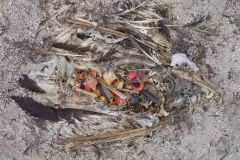What We’re Reading 11/14

Last week we read a lot about the U.S. Presidential election and its outcomes. Over the months ahead we will learn about new approaches to solving the problems that will continue to be front and center for the ocean. If you need a refresher on the science we suggest you take a look at our overview pages:
Climate Change
Ocean Acidification
Sea Level Rise
But the elections also brought some local results that have immediate benefits for the ocean. For example:
California Supports Plastic Bag Ban
On Election Day, California voted to ban single-use plastic bags, a cause for #OceanOptimism. The ballot measure—Proposition 67—won with 52 percent of the vote. Many counties and cities in California already had legislation that banned the bags, but this will bring the ban statewide. It will go into effect immediately meaning that shoppers without reusable bags will be charged ten cents per plastic bag moving forward.
And not all the news was political.
Why Plastic Bans Are Important
We have long known that seabirds (and other ocean animals) are consuming our plastic trash that ends up in the ocean. Now a new study shows why birds, which rely heavily on their sense of smell when making meal choices, are making the mistake of swallowing deadly bits of plastic. It turns out it’s their noses that are steering them in the wrong direction. Algae that grows on the plastic gets broken down by krill eating the algae, which releases a specific chemical that birds associate with food.
How To Hide When There Is Nowhere To Hide
How do tiny animals that live in the open ocean—with nowhere to hide—protect themselves from predation? Researchers (including zoologist Karen Osborn from Smithsonian's National Museum of Natural History) have found that the small crustaceans called hyperiids that call the midwater home use nanotechnology to make themselves "invisible."

